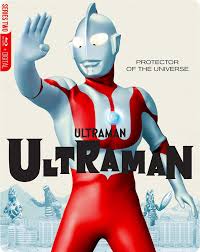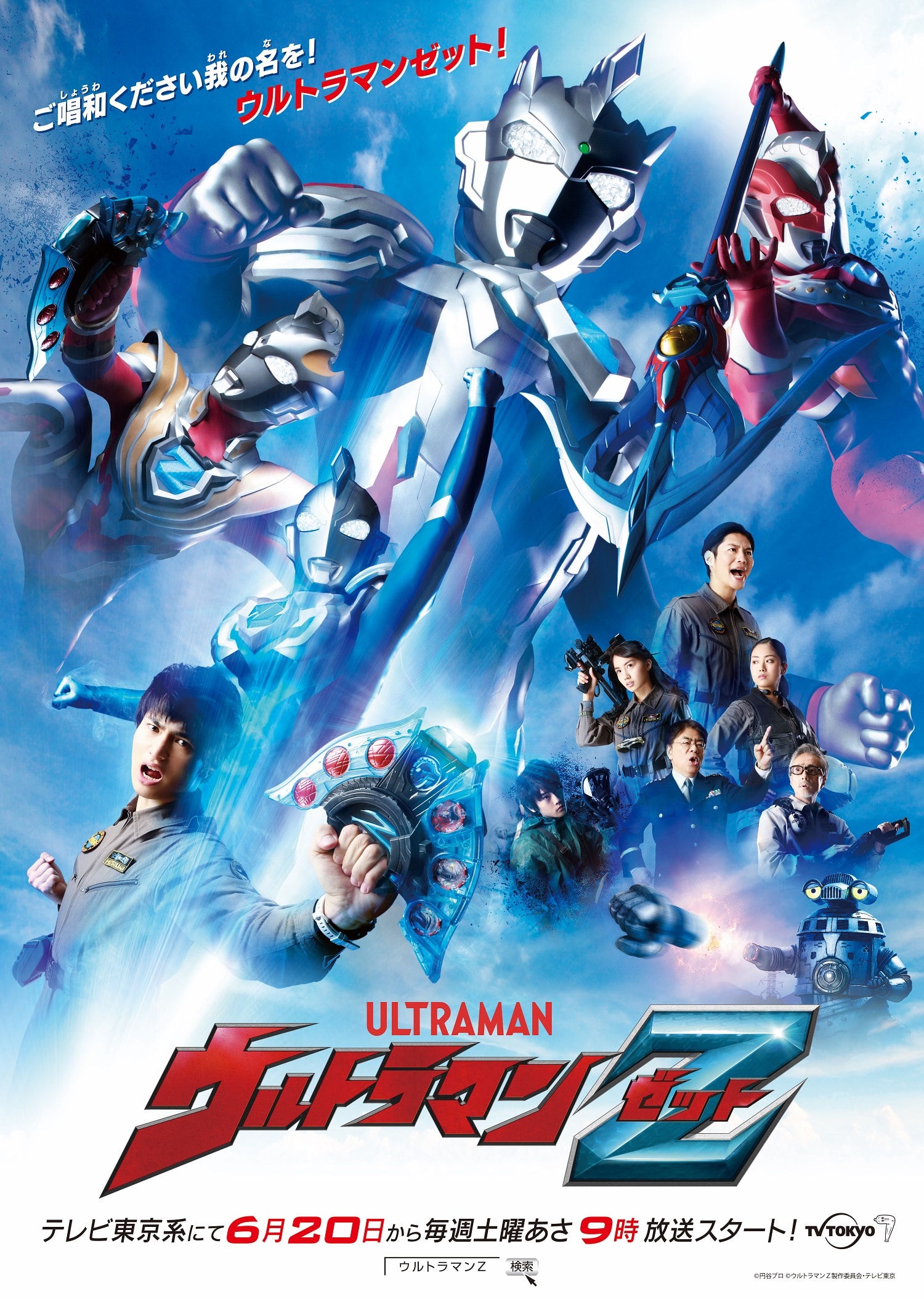Books We're Reading
When Violence is Necessary
"When Violence Is the Answer: Learning How to Do What It Takes When Your Life Is at Stake" by Tim Larkin, a self-protection expert and former military intelligence officer, provides [...]
Share this
For those who came of age in the early 90’s, there is a good chance one of your first encounters with the martial arts world was Saban’s Mighty Morphin’ Power Rangers, a westernized reworking of the long-standing Japanese Super Sentai series which pits a group of teens against giant monsters and malevolent beings bent on world domination.
The breakout success of Power Rangers unleashed a boom of similarly collaged English language adaptations of popular Superhero Tokusatsu (Special Effects) series from Japan through the early 2000’s.
Super Human Samurai Cyber Squad, Big Bad Beetleborgs, VR Troopers and more would cement an influence of the Tokusatsu aesthetic on western popular culture, making color-coordinated helmet-clad warriors recognizable as heroes the world over, and planting martial arts firmly in the global childhood imagination.
One particular Tokusatsu icon has recently crashed on US shores and is making quite a splash through the coordinated efforts of blu-ray and dvd producer Mill Creek Entertainment, Netflix and Marvel.
That icon is none other than Ultraman. Standing at 131 ft tall, Ultraman is a head above the rest. The Ultra Series as a whole is one of the longest running properties in TV history with a record of 27 spinoffs and counting. In production since 1966 with roughly 32 series and just as many “movie events” under its belt, the Ultra Series has nothing if not longevity, spurred on now by the rising fever pitch of late 20th century nostalgia gripping the entertainment world.

The red and silver clad pan dimensional being known as Ultraman, warrior from the Land of Light, is the brainchild of Eiji Tsuburaya (1901-1970), who happens to be regarded as the father of Tokusatsu (special effects) in Japan, and is best known internationally as the man who made Godzilla a reality.
Tsuburaya’s film career began in 1924 where for a period of 30 years he was a cinematographer, a talent he used as part of his wholistic approach to special effects. Eiji formed Tsuburaya Productions with his son Hajime in 1963 and shortly thereafter the Ultra Series was born.
What began as an Outer Limits styled episodic mystery series called Ultra Q would shift to the Giant Hero vs. Giant Monster format we all know and love in its second edition called Ultraman, which introduces the titular character and spawns the Giant Hero genre in Japanese science fiction television.
Eiji Tsuburaya only lived to see the first three editions of the Ultra Series (Ultra Q, Ultraman, Ultraseven) come to fruition, but under the Tsuburaya Productions banner Ultraman would endure for the better part of 50 years. From the mid 90’s to the present in particular, there has been barely a breath between series.
Nearly every entry in the ever expanding Ultra Series follows a fairly consistent pattern; Someone on earth demonstrates a selfless act during a terrible calamity that often results in their death, at which point an Ultraman, massive ancient beings from a place called Nebula M78 that have been disbursed into the fabric of the universe, merges with that person so that they may possess a great power in defense of the earth from Kaiju (Giant Monsters) and nefarious aliens.
These select humans can transform into their respective Ultraman (of which there are now dozens), each standing over 100ft tall, with the use of special devices, which have become ever more convoluted over the years. Recent series include the limitless possibility of fusing multiple Ultraman identities together for power moves against a growing roster of gargantuan enemies and escalating threats.
The pageantry and choreography of their transformations, mid-battle costume changes, epic power moves, the absolute knockdown drag out matches, and the caveat of a strict 3 minute time limit in Ultraman form make for a potent and suspenseful experience episode after episode.
The formula is so readily repeatable and so easily variable, it is no surprise that Ultraman would expand so quickly into one of the first examples of multiverse storytelling, which has virtually become a modern staple of mainstream entertainment.
One of the true nostalgic joys of any Ultra Series is the persistent reliance on practical effects, up to and including the 2020 produced Ultraman Z.
These are not green-screen CGI. These are literally men wearing costumes in miniature cities going head to head like everything is at stake and it is life giving to see that kind of sincerity. This is not simply an homage to the original series, which set the tone back in 1966, but a uniquely surviving attitude toward practical special effects in Japanese entertainment that can be seen in series like Kamen Rider.

Source: Marvel.com
While the overall feel of each battle in the Ultra Series is akin to pro-wrestling but with energy attacks, there are abundant elements of Karate, Judo, Sumo, Kendo, May Thai and MMA that are folded into the unlikely contests between monsters and giants, and teasing out those elements can be half the fun.
In this way, Mill Creek’s partnership with Tsuburaya isn’t just making a cultural touchstone accessible in a big way, it is preserving and proliferating the unsung work of stunt coordinators and suit actors like Hideyoshi Iwata (2003-2020) Akira Okabe (2015-2020) Bin Furuya (1966-68), Koji Uenishi (1967), Daisuke Terai (1996-2019) and many more, who bring the fantasy to literal life in masked anonymity.
Ultraman has been largely a domestic Japanese product, with only a handful of lukewarm international productions to speak of. But that has had no such limitation on its creativity or its impact. To the contrary, while it has made Ultraman a more esoteric thing, satisfying no appeals for a more western aesthetic, it has also solidified its appeal as an untainted original. With that integrity in hand, Ultraman is now poised for a true breakout success.
Netflix and Marvel may be doing their part to preserve and extend the Ultraman legacy with a new animated series (Ultraman) and comic series (Rise of Ultraman) respectively, but Mill Creek Entertainment takes the cake for the monumental task of releasing every edition of the Ultra Series on blu ray, dvd and streaming through Movie Spree in North America (all restored in HD with the original Japanese audio).
As of December, 14 series and their movie tie-ins have hit the market and 2021 is set to double that number. Based on the rate of release and of new series production, if one were to begin watching Ultraman now, they would never catch up, which sounds very much like a challenge.
A complete list of Mill Creek’s releases can be found here.
Loved this? Spread the word
Books We're Reading
"When Violence Is the Answer: Learning How to Do What It Takes When Your Life Is at Stake" by Tim Larkin, a self-protection expert and former military intelligence officer, provides [...]
Staff Reviews
Feed Me Fight Me is all about the Mission. For John Watkins and Brian Eayrs, who became friends while serving in the US Marine CORPS, their burgeoning business’ mission is a [...]
Oceania, Where We're Headed
Megan Anderson fears no woman. Even with a scheduled December bout against Amanda Nunes — a two-division UFC champion that napalms faces for a living — a dauntless Megan Anderson [...]
Strength and Conditioning Posts
How badly do you want it? I mean really want it? This is a question I've asked myself countless times throughout my martial arts journey. Because true mastery is attainable—but [...]
Movies We're Watching
By all rights, Alber Pyun’s Nemesis (1992) should be a staple midnight movie, slated alongside the likes of Eraserhead, Mad Max, and Faster Pussycat, Kill Kill! At that rate, his [...]
Workout Recovery Posts
Recovery techniques cover many bases. You do not want to wait until you are injured to start thinking about it. In fact, using proactive or preemptive recovery methods daily is [...]
Americas, Where We're Headed
Imagine the sport of Mixed Martial Arts is a house.The foundation is the rules, the walls and floors are the fighters, and the roof is the promoters. Maybe, the doorbell [...]
Africa, Where We're Headed
Egypt is home to one of the world’s earliest civilizations. The country has seven UNESCO World Heritage sites. There’s hardly anyone in the world who doesn’t know about Egyptian pharaohs [...]
Nutrition Posts
One of the primary ingredients in Dit Da Jow, fennel seeds are healthy and have massive health benefits that can help prepare you for a fight, may prevent bruising, and [...]
Middle East, Where We're Headed
The Kingdom of Saudi Arabia has been making news for opening its borders for recreational tourism. Until 2018, it issued visas only for pilgrimages, business matters, sports events, and foreign [...]
Europe, Where We're Headed
The European Budo Centre - Dojo Stara Wieś is an architectural gem nestled within the picturesque Polish landscape. This facility is designed and built according to the principles of Japanese [...]
Far East, Where We're Headed
Renowned as the queen of the South, Cebu is the port capital and the oldest city in Cebu province. Located in the Central Visayas, it’s the country’s most developed area, [...]
Stuff We're Learning
Meditation and martial arts might seem like opposites—one still and contemplative, the other explosive and physical. Yet for centuries, the world's greatest warriors have known a secret: the path to [...]
Injury Management Posts
In June 2021, the world watched in horror as Danish footballer Christian Eriksen suffered a sudden cardiac arrest during a Euro 2020 match. This shocking incident highlighted the importance of [...]
Session expired
Please log in again. The login page will open in a new tab. After logging in you can close it and return to this page.